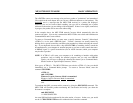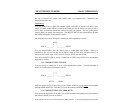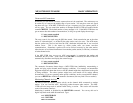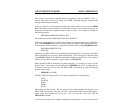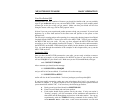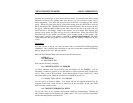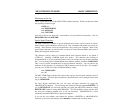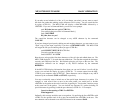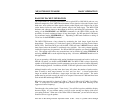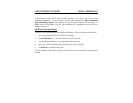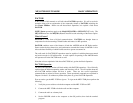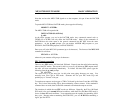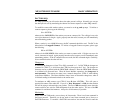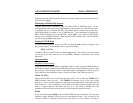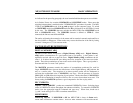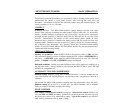
MFJ-1278B MULTI-MODE BASIC OPERATION
BASIC HF PACKET OPERATION
The requirements for optimum performance with a typical HF or OSCAR 10 path are very
different compared to local VHF FM environment. Lower signal to noise ratios require lower
baud rates, noise spikes and fades require shorter packet lengths, and a higher rate of false
carrier detects lowers the total usable dynamic range in the audio input. The MFJ-1278B
hardware and software improves throughput in the noisy and fading HF environment. The
setting of the MAXFRAME and PACLEN commands in the MFJ-1278B, provide the
possibility of several continuous frames of long data length. For HF operation at 300 baud,
we recommend setting MAXFRAME to 1. Depending on HF band conditions a setting of
128 or less for the PACLEN command.
The MFJ-1278B detects a busy channel by monitoring the lock- detect signal from the
demodulator. The presence of a lock-detect signal is indicated by the Data Carrier Detect
(DCD) LED. Each time DCD goes off the MFJ-1278B will start a DWAIT interval which
must elapse before the channel is considered to be available. On a noisy channel spurious
lock-detect signals may be generated. For HF and OSCAR operation you should set DWAIT
to 0. The random wait before retry transmissions can be disabled by setting TXDELAY 0
and using AXDELAY to set the required keyup delay. Of course, AXHANG should be 0 for
this application.
If you are operating a full-duplex radio station (simultaneous transmit and receive) such as an
OSCAR 10 station, you should set FULLDUP ON. The MFJ-1278B is always electrically
capable of full duplex operation, but this parameter causes the protocol to behave differently
in acknowledging packets. In addition, the MFJ-1278B will ignore the state of the DCD line.
Although intuition tells you that lower baud rates will reduce the number of packet retries,
there is usually a small range between "too fast" and "too slow." A slower packet takes
longer to transmit and is therefore a larger target for fades and static crashes. The entire
packet must be received correctly in order to be accepted. Data rates of 1200 baud have been
used on both HF and through OSCAR 10.
HF activity may generally be found on 7.090 to 7.106 or 14.090 to 14.107 MHz. Use LSB or
USB - it really does not matter (although most stations use LSB when referring to the
suppressed carrier frequency).
Tune through a few packet signals. Tune slowly! You will find a point at which the display
becomes bright. As you continue tuning, you will see the moving bar display slide across
your tuning indicator. When one of the center LEDs is illuminated, you are tuned in and you
should be able to copy the packets.
Each bar on the tuning indicator represents about 10 Hz. Thus, if a packet comes through



